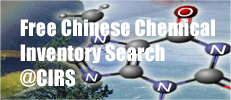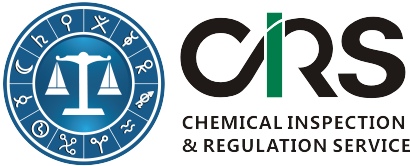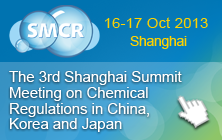GHS in China, South Korea and Japan
Updated in June 2013, China, South Korea and Japan have all implemented "Globally Harmonized System of Classification and Labelling of Chemicals (GHS)" promoted by UN to harmonize rules for the classification, labelling and safety data sheets of chemicals at national, regional and worldwide level.
As an international agreement GHS is non-legally binding in the member countries of United Nations. Thus many countries and regions have published their own regulations or standards to implement GHS. For example, the GHS criteria were introduced into Europe via the Regulation (EC) No 1272/2008 on the Classification, Labeling and Packaging of substances and mixtures (CLP) in 2008.
China, Korea and Japan have published their own laws or standards to implement GHS in their own countries. In this article we will summarize the latest progress of GHS implementation in those countries and compare the difference between those countries.
GHS related laws and regulations in China, Korea and Japan
Country |
Laws and Regulations |
|
Main laws: - Regulations on safe management of hazardous chemicals(2011) - requiring GHS sds and label for hazardous chemical substances. - The Measures on Environmental Administration of New Chemical Substances (2010)- requiring GHS classification data and sds for new chemical substances. Classification standards: GB 20576 ~ GB 20602-2006 - “Safety rules for classification, precautionary labeling and precautionary statements of chemicals ” - based on UN-GHS 2003 1st edition. GB 13690-2009 - "General rules for classification and hazard communication of chemicals"; - Please note this standard also applies to consumer products. Labelling standards: GB 15258-2009 – "General rules for precautionary label for chemicals”; GB 190-2009 - “Packaging Labels for Dangerous goods"; GB/T 22234-2008 - “Labeling of Chemicals Based on GHS”; Safety Data Sheet: GB/T 16483 -2008 - "Safety data sheet for chemical products: Content and order of sections". |
|
Main Laws: - Industrial Safety & Health Act - requiring GHS classification and labelling for chemicals that meet GHS hazard criteria; - Toxic Chemicals Control Act - requiring GHS classification and labelling for toxic chemicals; - Korea REACH requires hazard information and registration number to be communicated in SDSs. Standards: Public Notice No 2008-26 - Regulation for Classification & Labeling of Toxic Chemicals. MoL Notice No 2012-14 - Standard for Classification and Labeling of Chemical Substance and Material Safety Data Sheet More info about Korea GHS can be found here. |
|
Main Laws: - Industrial Safety and Health Law (ISHL) - requiring GHS classification data and labelling for ISHL listed substances(~640 substances); CSCL has required label for Class II Specified Chemical Substances. PRTR law requires MSDS for over 400 substances. Poisonous and Deleterious Substances Control Law (PDSCL) has required MSDS for over 300 substances. Even though those laws did not mention GHS, GHS SDS and labels are recommended. Standards: - GHS classification (JISZ7252); - MSDS (JISZ7250) - to be used until 2016; - labelling (JISZ7251) to be used until 2015. - New standard JISZ7253(SDS+Labellling) to replace JISZ7250 and JISZ7251 in 2012. All standards mentioned above are available for purchase. |
GHS Implementation Timeline for China, Korea and Japan
Country |
Important Timeline |
|
31 May 2011 This is the day when the transitional period for the three compulsory GHS national standards GB 13690-2009, GB 15258-2009, and GB 190-2009 end. All chemicals or mixtures placed on Chinese market shall be classified and labeled in accordance with those standards from 1 June 2011. 1 Dec 2011 This is the day when Regulations on safe management of hazardous chemicals (2011) comes into force. From 1 Dec 2011, companies who fail to provide GHS compliant SDS and labels for hazardous chemicals might face a maximum penalty of 50,000 yuan or even a ban on production or import; The current Catalog of Hazardous Chemicals (2002) contains more than 3,700 chemicals. Comments The deadline 31 May 2011 applies to almost all classified substances and mixtures placed on Chinese market. However, only failure to classify and label hazardous chemical substances might lead to legal penalties. |
|
1 July 2010 The grace period for mandatory GHS classification and labelling for substances that meet GHS hazard criteria ends. This deadline is set by the Public Notice No 2008-29. 1 July 2011 The grace period for mandatory GHS classification and labelling for toxic substances regulated under TCCA. This deadline is set by the Public Notice No 2008-26. 1 July 2013 This is the day when the transition period for mandatory GHS classification and labelling for mixtures ends. This deadline is set by both public notice mentioned above. Comments: GHS classification and labelling is mandatory for almost all chemicals that meet GHS classification criteria in Korea. Latest Trends On 28 June 2011, National Institute of Environmental Research (NIER) of South Korea published the amended list of GHS classification and labelling for “Toxic Chemical” regulated by TCCA. The list contains 618 chemicals. It will be mandatory for companies to use the GHS classification in the list to prepare SDS and chemical label from 1 July 2011. This list is constantly being updated. The list is available here: |
|
1 Dec 2006 Amended ISHL implementing GHS came into force, requiring mandatory GHS classification data and label for around 640 chemicals regulated by ISHL. 31 Dec 2010 The grace period for the new MSDS standard(JIS Z 7250:2005) ends. The old Japanese format(JIS Z 7250:2000) will no longer be used. Comments ISHL is the only law requiring GHS compliant label and MSDS in Japan. This requirement only applies to around 640 designated substances only. Other laws have also required MSDS and label for hundreds of other regulated substances, but not all substances. However, we strongly suggest that all chemicals and mixtures placed on the Japanese market come with MSDS and labels that have been prepared in accordance with relevant national standards. Latest Trends Japanese government has kept classifying substances in accordance with GHS criteria for many years. Up to 1 June 2011, GHS classifications for 2,231 substances have been published. However, it is not mandatory for industry to use those classification data. The list is available from: |
GHS Building Blocks in China, Korea and Japan
Each country or region can choose which hazard classes and categories to implement from UN-GHS in the their legislation. This approach is called building blocks approach, which makes GHS slightly different in each country. Besides, the constant change of UN-GHS has caused inconsistency between the latest version of UN-GHS and GHS in those countries.
Country |
Building Blocks |
|
The following hazard classes and categories from 4th revised UN-GHS are not adopted: - Chemically unstable gases category A and B; - Non-flammable aerosols category 3; - Respiratory sensitization subcategory 1A & 1B (China does have category 1); - Skin sensitization subcategory 1A & 1B (China does have category 1); - STOT- single exposure category 3; - Aspiration category 1 and 2; - Hazardous to the ozone layer category 1 Other differences: - acute toxicity for (inhalation) gases category 4 and 5. Threshold value is 5000 ppm, not 20000ppm; - simplified label; - black frame of pictogram is also acceptable; More information can be found here. |
|
The following hazard classes and categories from UN-GHS are not adopted: - Chemically unstable gases category A and B; - Non-flammable aerosols category 3; - flammable liquids category 4; - acute toxicity category 5; - skin corrosion/irritation category 3; - acute aquatic toxicity category 2 and 3; |
|
The following hazard classes and categories from the 4th edition of UN-GHS are not adopted: - Chemically unstable gases category A and B; - Non-flammable aerosols category 3; - acute toxicity category 5; - skin corrosion/irritation category 3; - aspiration hazard category 2; |
Note 1: CLP label is a very good example of explaining the main elements of a GHS label. REACH and CLP compliant SDS showcases the format and content of a good GHS SDS even though identified uses, registration number and exposure scenarios are not needed in the SDS in China, Korea and Japan.
To follow more events and free regulatory updates from CIRS, please subscribe our monthly newsletter:
About CIRS & Contact
We have provided one-stop chemical notification and GHS services for many companies doing business in/with Asia (for example, China, Japan, Korea, Taiwan, Malaysia, and Philippine). We help them find out how their chemicals are regulated in those countries or regions and offer free initial consultations about how to comply. If notification is required, we help them submit chemical registrations. We also prepare or translate GHS compliant SDS and label in accordance with their national chemical legislation at affordable prices.
If you have any questions about chemical compliance in the Asia-pacific region, please contact:
- CIRS China
11F Building 1, Dongguan Hi-Tech Park, 288 Qiuyi Road, Binjiang District, Hangzhou 310052, China
Tel: +86-571 8720 6555 | Fax: +86-571 8720 6533
Email: service@cirs-reach.com
Latest Event
Great References
- UN-GHS 2003 Fulltext
- UN-GHS 2009 Fulltext
- National Insitute of Technology and Evaluation (NITE), Japan
- JETOC, Japan
- Network for Strategic Response on International Chemical Management
- National Registration Center for Chemicals of SAWS - CN
- Chemical Registration Center of MEP, China
- Chemicals Management by Ministry of Environment (MOE), Korea
- National Institute of Environmental Research (NIER), Korea
- Korea Chemicals Management Association (KCMA)
- Ministry of Economy, Trade and Industry (METI), Japan
- Ministry of Health, Labor and Welfare (MHLW), Japan
- Ministry of the Environment (MOE), Japan



